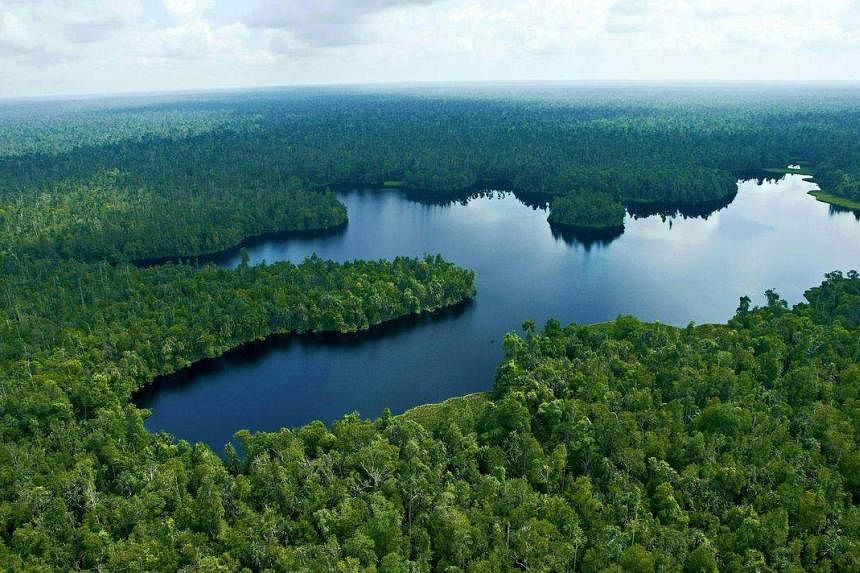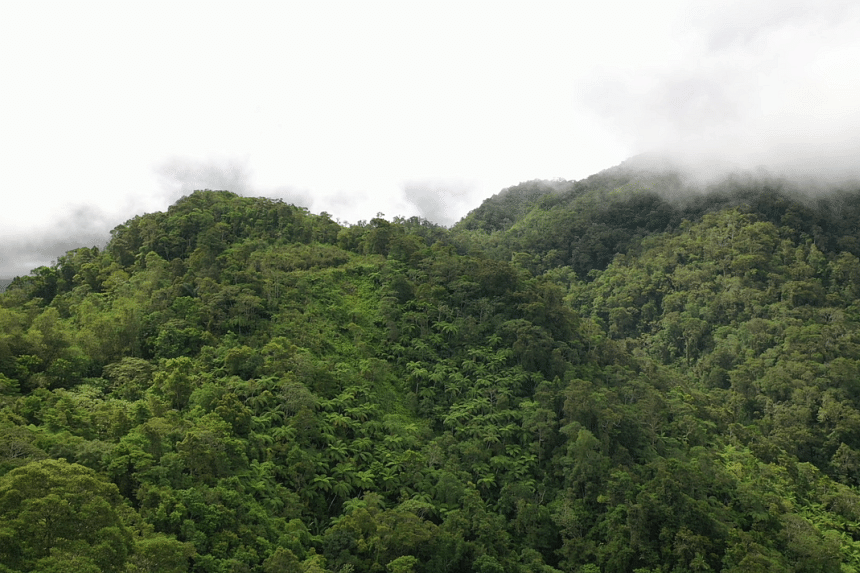SINGAPORE - If 30 per cent of the world’s forests and land areas can be saved, about 1,000 species of animals living in unprotected habitats could escape extinction’s grip, according to scientists in Singapore and the United States.
One of them is the short-crested coquette, a tiny and vibrant-coloured hummingbird native to a small area in Mexico.
The 7cm-long hummingbird is known to reside only around a 25km stretch of road in southern Mexico, and its forest habitat has been rapidly lost to maize, fruit and coffee plantations.
With between 250 and 999 mature coquettes left in the wild, the species is classified as critically endangered.
And if a third of the Earth’s forests, mangroves and peatlands is preserved, about 10 billion tonnes of carbon dioxide (CO2) emissions can be avoided or sequestered a year, said the study. That is a quarter of the estimated global CO2 emissions from human activity in 2022.
But how much extra land area would need to be protected to achieve the 30 per cent goal? An estimated 2.7 billion hectares, or the combined area of China and Russia, must be further protected to achieve the 30 per cent goal.
The findings were derived by the Singapore and US conservation scientists using satellite images and statistics to model the benefits of doubling the amount of protected land areas by 2030.
Ocean and marine protection was not covered by the study led by the National University of Singapore Centre for Nature-based Climate Solutions (CNCS).
Currently, almost 17 per cent of the planet’s land area is protected from degradation and deforestation, according to online database Protected Planet, an online database on conserved areas around the world.
On Wednesday, negotiations on a global target to protect at least 30 per cent of the planet’s land and ocean by 2030 will begin at the United Nations’ COP15 biodiversity conference in Montreal.
As at June, more than 100 countries – including the US, Timor-Leste and Estonia – have joined a coalition called the High Ambition Coalition for Nature and People, to support the 30 per cent goal.
A few countries have already reached the target. More than 50 per cent of Bhutan and Luxembourg’s land areas are protected, for instance.

But in land-scarce Singapore, only close to 5 per cent of its land is currently protected, and that includes its four nature reserves.
The island-state’s sixth national report to the UN Convention on Biological Diversity, submitted in 2020, said: “Due to the limited land area in Singapore, our natural areas tend to be small and isolated.”
But to maintain the biodiversity of these areas, it is important to connect the green spaces, restore habitats and implement species recovery projects, among other efforts, the document added.
Dr Zeng Yiwen, research assistant professor at CNCS and lead author of the 30 per cent modelling study, said: “The integration of nature into Singapore’s landscape and various infrastructure is likely a good way of trying to maximise the amount of biodiversity benefits and ecosystem services given our existing limitations.”
His paper, published in scientific journal Science Advances in June, modelled global land protection through nine scenarios.
One scenario prioritises preserving nature areas that are far away from human settlements and are not threatened by deforestation. Countries and regions could start eyeing those places because they might be easier to protect.
But many of those places tend to be the “rock and ice” areas that are not rich in biodiversity, such as northern Canada, Greenland and the north of Russia.

Furthermore, when land is gazetted for protection, indigenous communities and populations that rely on the land for their livelihoods could get hurt. Opponents of the nature-saving ambition have called it “the biggest land grab in history”.
To find a middle ground, Dr Zeng said a portion of the protected land should allow for sustainable human activities such as ecotourism or agroforestry projects.
His calculations also found that Indonesia and Malaysia are among countries that stand to gain the most from committing to the 30 per cent target. Those countries have vast tracts of biodiversity hot spots, and its forests can act as carbon sinks while improving water quality and preventing nutrient pollution.
Avoided carbon emissions from a protected area could also be available to carbon markets, and this is where Singapore could play an important role, as it aspires to be a carbon services hub, said Dr Zeng.
Carbon credits can be bought from these avoided deforestation projects can support forest conservation efforts.
For Dr Zeng, a conservation ecologist, what matters to him is what happens after the COP15 conference in Montreal.
“How will governments fund the increase of protected areas? There is a huge cost for this, including the cost for establishing and managing protected areas. How do we fund it in a sustainable and equitable way, since these areas are meant to last for a long time?”


